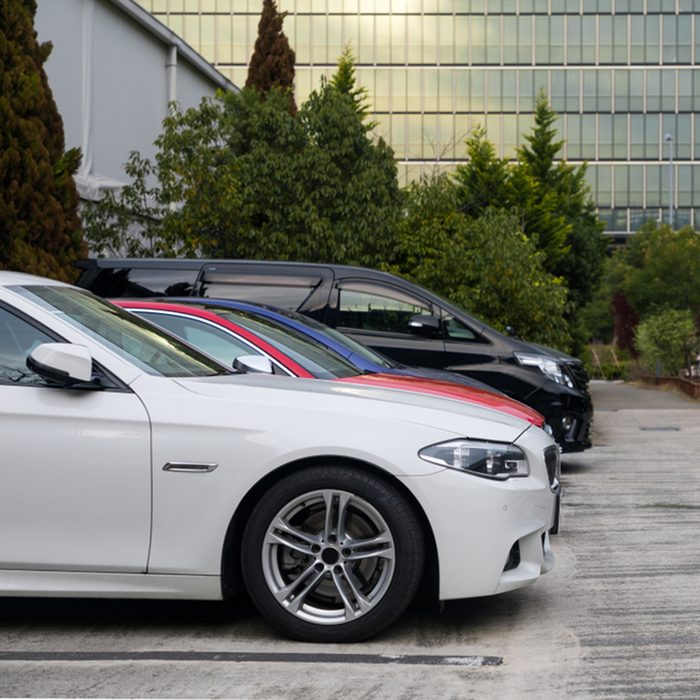
The parking lot isn’t clean
If you get out of your car and come face-to-face with open dumpsters, trash and cigarette butts on the grounds, you may want to keep driving, says Ken Rice, a consultant with more than 30 years of experience in the restaurant industry. Rice says dirty windows and doors are also a sign the restaurant isn’t focused on cleanliness, and that may carry over into the areas where your food is prepared. You should also be sure to not order these 15 foods when you’re eating at a restaurant.

The restaurant has too many “themes”
Themes, styles, and designs are a great way for restaurants to promote their personality to guests, but too many may be a red flag. “All restaurants have a look and feel. That’s what attracts customers,” says Fabiana Meléndez, a publicist in Austin, Texas. “If you end up somewhere that has too many themes, such as a cool dive bar inside but a nautical-themed beach bar out back, this can sometimes be an indication service and management are not in sync behind the scenes.”

The staff appears disinterested
Everyone can have a down day, but if the entire staff looks like they’d rather be anywhere else than here, you may be in for a regrettable experience. “If the front-of-house staff looks disinterested and checked out, it is a sign that the management isn’t doing a good job running the restaurant,” says Michelle Stansbury, food blogger at Eat, Drink, Be SD. “And if the front of house looks unengaged, the back of house probably is as well.”

Their reviews are influencer-heavy
When restaurants are looking to boost their online profiles, they may hire PR teams to reach out to local bloggers, journalists and people who frequently post reviews. They may offer free or discount meals and turned-up customer service, hoping for a great review—but that may not be the real restaurant experience, Meléndez says.
“Restaurants, especially upscale ones, have PR teams dedicated to generating good publicity. Whether it be a write-up or pictures of your favorite influencer dining there, we work around the clock to ensure restaurants are always providing stellar service,” Meléndez says. “But what matters is how they treat everyone. If you see influencers singing their praises on Instagram but find their Yelp reviews are questionable, this is a big indication of bad service.”
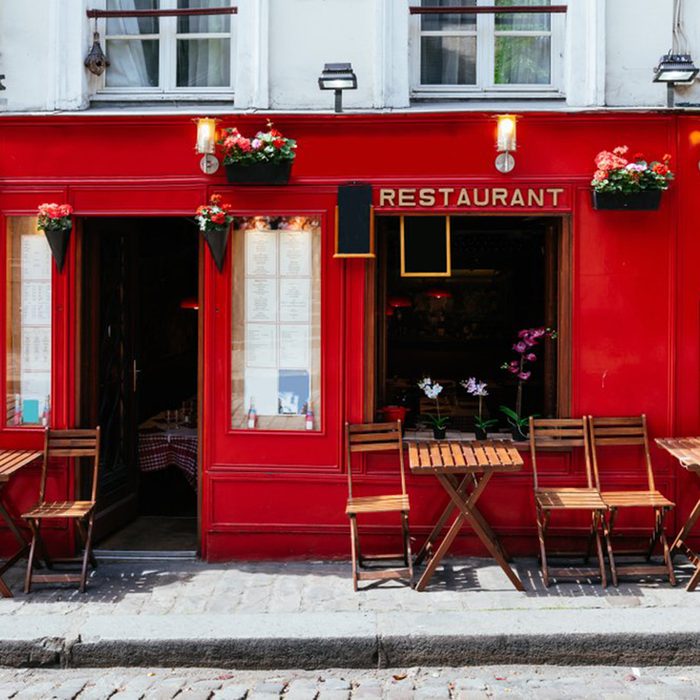
Everyone in the restaurant is a tourist
If you want to get to the good food, go where the locals are. Tourist-filled restaurants are a red flag. “If you only see other tourists at a restaurant, perhaps because it’s the only place near a popular attraction, I would hesitate to eat there,” Stansbury says. “Restaurants where the locals are eating indicate that at least some diners are there because of its reputation.”
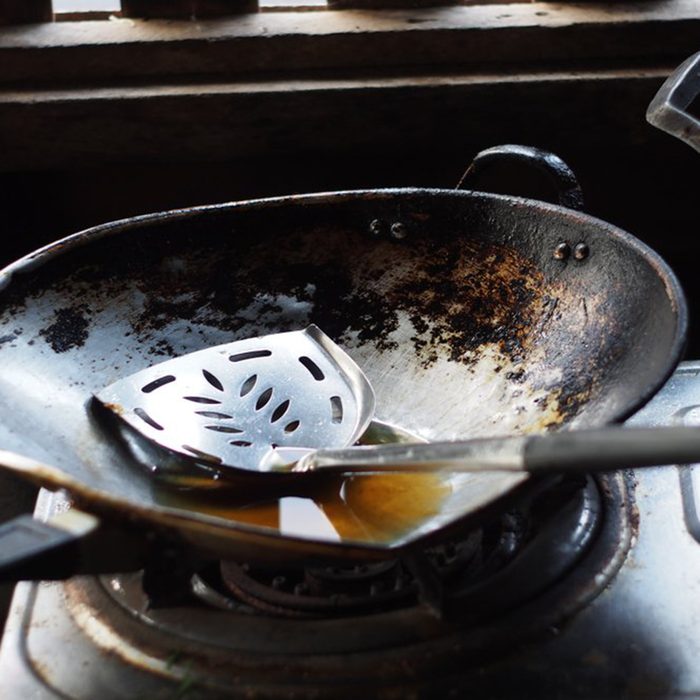
The restaurant smells
Your nose knows when you’ve stumbled upon a not-so-stellar establishment, Rice says. Whether the restaurant smells like stale grease, burned food or just an overall stench that burns your nostrils, trust your nose’s instinct and walk away. Kitchens and restaurants that emphasize cleanliness will work to eliminate lingering smells from coolers, cooktops and other places where odors can emanate. If the smell is coming from your kitchen, here’s how to get rid of it.
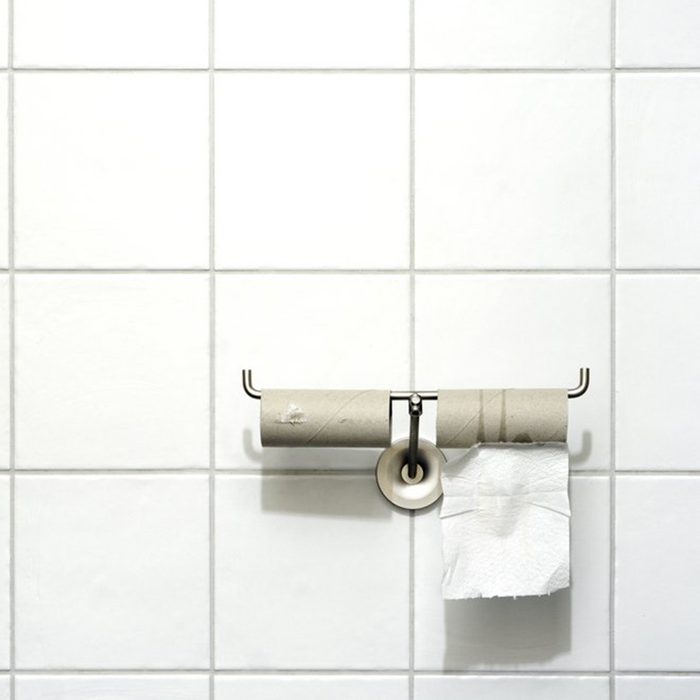
The bathroom is dirty
If you’re on the fence about a restaurant, take a look at the bathroom. It’s a good indicator of how clean the remainder of the place is. If the bathroom is neglected—the soap dispenser is empty, the toilet paper is on its final squares, the floor is soapy and wet—it’s a sign the staff isn’t keeping up with their tasks, and that might signal they’re not keeping up with other restaurant cleanliness tasks, too.
“It’s noteworthy that in all of my career, I’ve never been in a restaurant with a poorly-maintained restroom that had a stellar kitchen or served a superior food product,” says Alan Guinn, a consultant in the restaurant industry for more than 25 years. “The restrooms serve as an immediate indication to me of the lack of attention to detail that can undermine food quality, even prior to having it served for me to enjoy—or not.”
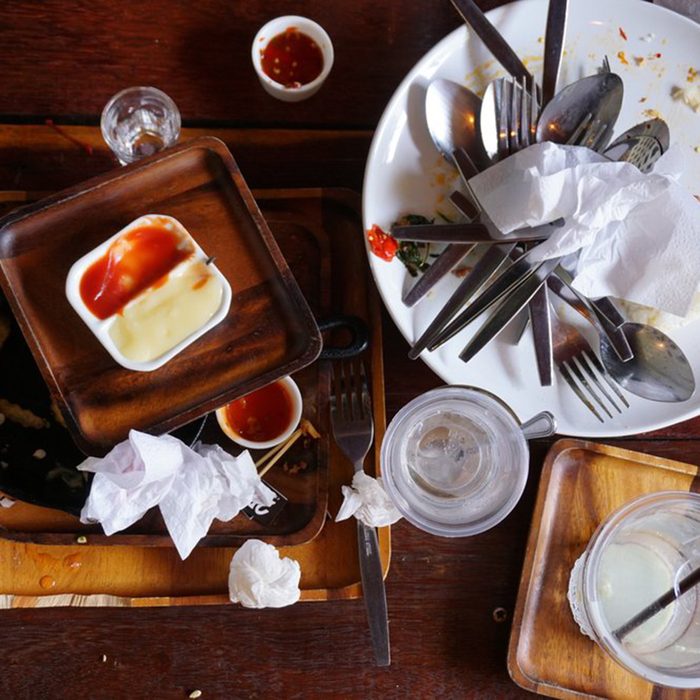
The kitchen is chaotic
Restaurant bathrooms are often near the entry to the kitchen, so while you’re back there checking out how clean the stalls are, spy on the kitchen. If it looks messy or out of control, it might be time to head out the front door. Reality TV shows aside, kitchens may be busy but they’re rarely chaotic. Organization and cleanliness are important for health inspections and for making the whole place run smoothly. If the kitchen looks far from a well-oiled machine, it’s time to go.
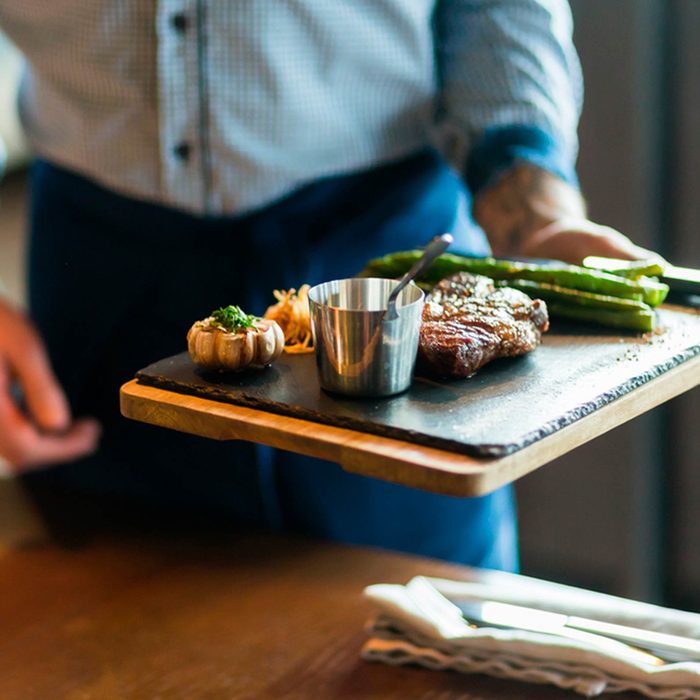
The errors keep coming
Restaurants are very busy places, and errors happen. However, if things go wrong again and again—and again and again—this may be a sign something isn’t quite right behind the scenes. “Servers are human, and an error or two can occur, especially if the noise level makes it hard to hear each other,” Meléndez says. “But if you order one appetizer and receive another, or simply never get it at all, while your entrees also got mixed up, this is a flag that service may not be up to snuff.”
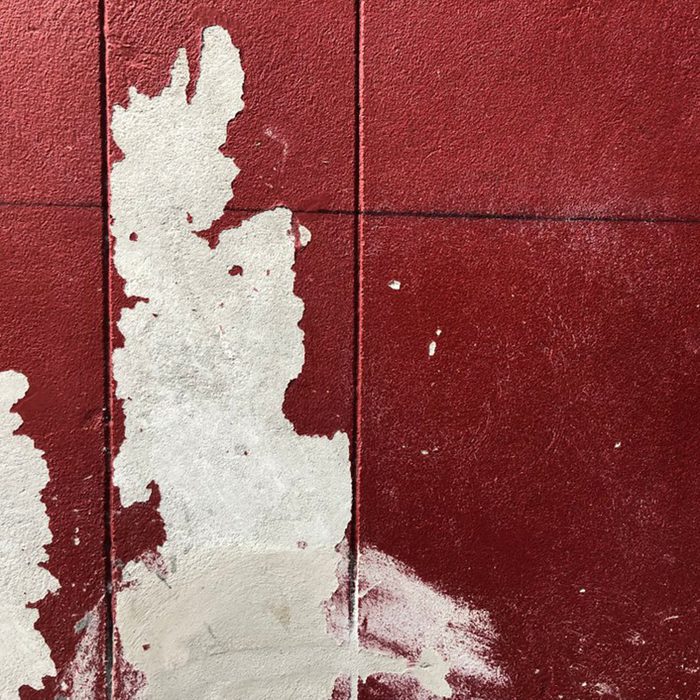
The building is in a state of disrepair
Cute restaurants with character and charm are one thing, but decrepit buildings are another. “While most everyone has a story about ‘a little hole in the wall’ where they had a great meal, that’s the exception and not the rule,” Guinn says. “You can tell much by considering the general state of disrepair of the restaurant itself. Stained ceiling tiles, unswept or unvacuumed floors, dead or dying plants, torn wallpaper, or paint chipped and stained, and especially unkempt restrooms don’t bode well for the upcoming meal.” Here’s why you shouldn’t use the pepper shakers at restaurants.
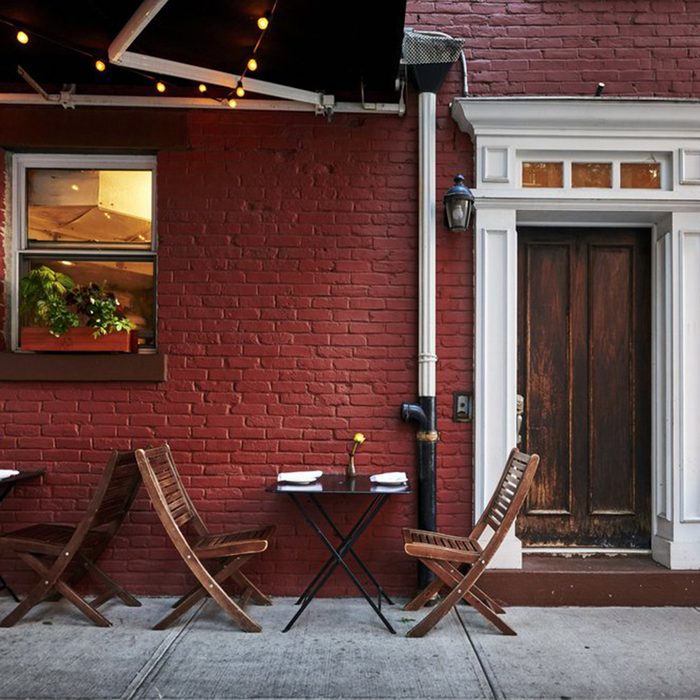
The restaurant is empty
Early birds may be accustomed to dining alone, but if you walk into a restaurant at peak meal hours and you’re almost alone, the absence of others may be sending a message. “The number one thing to look for when choosing a restaurant is customers,” says Kenny Colvin, who runs a food and drink branding, design and consulting agency. “Are there other customers dining there? If no one is eating in a restaurant, there’s a reason for it. It could be overpriced, it could be bad customer service or bad food, but if the seats are empty, consider it a red flag.”

The menus are a mess
If the restaurant’s appearance isn’t a warning, the first thing you hold in your hand can wave a red flag. “It may seem counterintuitive, but I can often predict the upcoming experience based on the menus I’m offered,” Guinn says. “If the restaurant delivers torn, worn or dirty menus, that tells you the waitstaff isn’t adequately trained, or that the manager doesn’t pay attention to his or her restaurant environment.”
Menus with bread crumbs, food stains and spilled sauces signal they’re not cleaned regularly. If the staff isn’t paying attention to this detail, they may be missing even bigger things. “It’s a sure sign that attention to detail is lacking. A manager who ignores the front of the house often has difficulty in the administration of both the front and back of the house,” Guinn says.

The diners aren’t happy
Enjoying a meal together is a joyful occasion, but if everyone in the restaurant is wearing a frown or showing signs of frustration, head back out the door. “Look around at the people eating or just finished with their food,” Stansbury says. “If they seem unimpressed with their food, it’s an easy guess you might be with yours as well.”
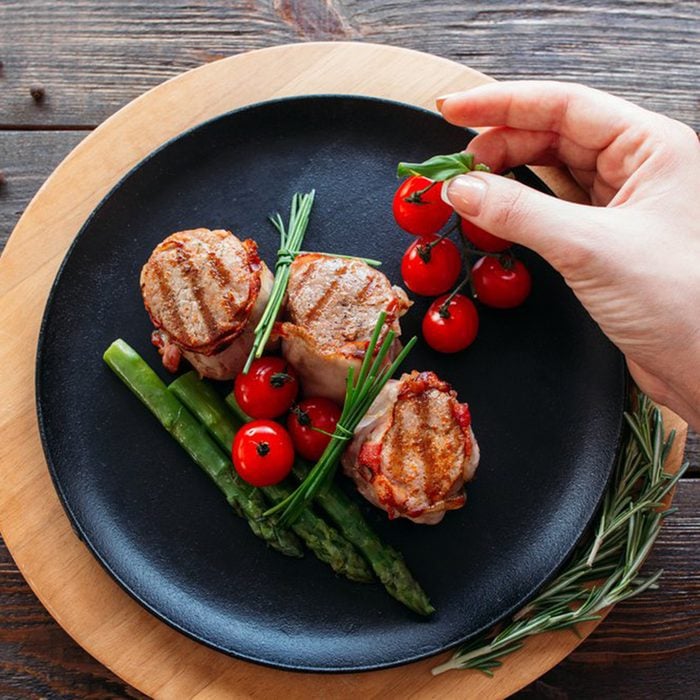
The food is jumbled on the plate
Clearly finding something in your food—a bug, a hair, a piece of metal—is a sign something is terribly wrong in the back of the restaurant; another indicator of a bad restaurant is the way they put the food on the plate, Guinn says. “Poorly-prepared or poorly-plated or served food, food served without appropriate side dishes or condiments—especially items ordered—will create a mindset of ‘my food doesn’t represent good value,’ Guinn says. “Even if the food is tasty, the value proposition of the meal will be adversely challenged in the mind of the guest.” Next, find out the things restaurant owners wish they could tell you.